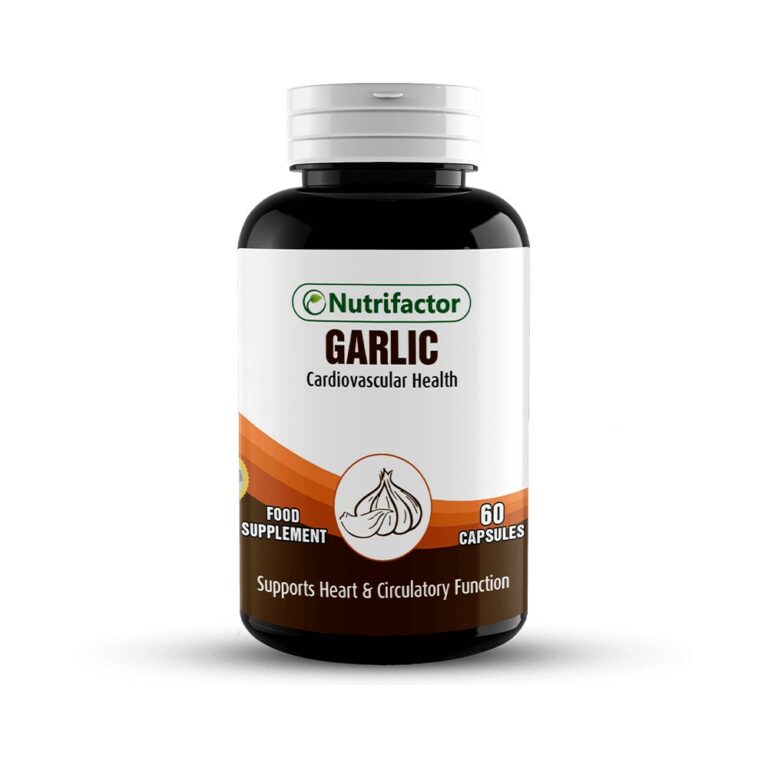More Than Just Crunch: An Epic Tale of Celery’s Unsung Health Virtues
Introduction: The Unsung Hero of the Produce Aisle
In the bustling theatre of our culinary landscape, some ingredients are undeniable superstars – the vibrant berry, the potent garlic clove, the nutrient-dense leafy green. Then there are the quiet achievers, the reliable supporting actors who perform their roles diligently, often without the fanfare they deserve. Celery, with its characteristic crispness and unassuming pale green hue, has long been relegated to this latter category. It’s the crunchy backbone of countless mirepoix, the low-calorie vehicle for dips, the refreshing addition to a salad. It’s "just crunch," a hydrating whisper in a world of bold flavors.
But what if we told you that this humble stalk harbors a secret, a profound narrative woven into its fibrous strands? What if celery’s story is far more intricate, its health benefits more expansive and scientifically compelling than its modest reputation suggests? To truly appreciate celery, we must embark on a journey beyond its satisfying snap, delving into its rich history, complex biochemistry, and the profound impact it can have on human health. This isn’t merely a list of facts; it’s an unveiling, an epic tale of a vegetable’s transformation from culinary background dancer to a potent force for well-being, demanding a re-evaluation from even the most knowledgeable among us.
Historical Echoes: From Ancient Medicine to Modern Misconception
Celery’s journey to our modern plates is steeped in antiquity, a testament to its enduring presence in human culture. Its origins trace back to the Mediterranean and North Africa, where wild celery (Apium graveolens) grew in marshy areas. Unlike the domesticated varieties we recognize today, ancient celery was notably bitter and challenging to consume raw. Consequently, its initial role was not primarily culinary but medicinal and ceremonial.
The ancient Egyptians utilized celery for funeral rituals, finding symbolism in its leafy greens. The Greeks, renowned for their philosophical and medical advancements, employed celery seeds and leaves as a diuretic, an anti-inflammatory agent, and even as an aphrodisiac. Hippocrates, the father of medicine, is said to have prescribed celery for nervousness. Roman texts also detail its use for various ailments, particularly digestive issues and as a purifying agent.
Through the Middle Ages, celery continued to be cultivated, albeit sparingly, for its perceived medicinal properties. It wasn’t until the 16th and 17th centuries, particularly in Italy, that selective breeding began to transform the bitter wild plant into the milder, more palatable vegetable we know. Italian gardeners are credited with developing the first "celery" varieties suitable for culinary use, leading to its gradual spread across Europe and eventually to the Americas.
Yet, despite this long and esteemed history as a therapeutic plant, the advent of modern nutrition science, often focusing on macro-nutrients and a select few vitamins, inadvertently stripped celery of its mystique. Its high water content and low calorie count, while beneficial, overshadowed its profound phytochemical complexity. It became a dieter’s friend, a source of hydration, but little else. Our knowledge of its deeper benefits became a casualty of oversimplification. This narrative aims to reclaim that lost knowledge, piecing together the scientific understanding that affirms the wisdom of our ancestors.
The Nutritional Blueprint: A Foundation of Essential Goodness
Before we delve into the intricate world of celery’s bioactive compounds, it’s crucial to acknowledge its foundational nutritional profile. While not a powerhouse of any single nutrient in isolation, its synergistic blend contributes significantly to overall health.
At its core, celery is over 95% water, making it an excellent source of hydration. This alone contributes to countless bodily functions, from regulating body temperature to transporting nutrients and aiding detoxification. Beyond water, a single large stalk of celery (around 40g) offers:
- Calories: A mere 6 calories, making it a dream food for weight management.
- Dietary Fiber: Approximately 0.6g, primarily insoluble fiber, which aids digestion, promotes regularity, and contributes to satiety. We’ll explore fiber’s broader implications for gut health later.
- Vitamin K: A significant source, providing about 12% of the Daily Value (DV). Vitamin K is vital for blood clotting and bone health.
- Vitamin C: Around 3% of the DV, an essential antioxidant and immune booster.
- Vitamin A (as beta-carotene): Roughly 2% of the DV, crucial for vision, immune function, and skin health.
- Folate: Important for cell division and DNA synthesis.
- Potassium: An electrolyte vital for blood pressure regulation, nerve function, and muscle contractions.
- Manganese: A trace mineral involved in bone formation, metabolism, and antioxidant defense.
- Other Minerals: Smaller amounts of calcium, magnesium, and phosphorus.
While these individual nutrient contributions might seem modest, their collective presence forms a robust base upon which celery’s more complex health benefits are built. It’s the perfect canvas for the masterpieces created by its phytochemicals.
The Phytochemical Symphony: Unveiling Celery’s True Power
The true "story" of celery’s impressive health benefits lies not just in its vitamins and minerals, but in its extraordinary arsenal of bioactive plant compounds – phytochemicals. These are the molecules that give plants their color, aroma, and protective qualities, and when consumed, they orchestrate a symphony of positive effects within the human body. For a knowledgeable audience, understanding these specific compounds and their mechanisms is key to appreciating celery’s depth.
-
Flavonoids: The Antioxidant and Anti-inflammatory Maestros
Celery is particularly rich in several potent flavonoids, a diverse group of plant pigments with remarkable health-promoting properties.- Apigenin: This is perhaps the most well-studied flavonoid in celery. Apigenin is a formidable antioxidant, scavenging free radicals and mitigating oxidative stress, a key driver of chronic diseases. More importantly, apigenin exhibits powerful anti-inflammatory effects by inhibiting the activity of pro-inflammatory enzymes like cyclooxygenase-2 (COX-2) and inducible nitric oxide synthase (iNOS), and by modulating signaling pathways such as NF-κB. This makes it a potential player in reducing inflammation associated with conditions like arthritis, cardiovascular disease, and neurodegenerative disorders. Research also points to its potential anti-cancer properties, which we’ll explore further.
- Luteolin: Another significant flavonoid, luteolin shares many properties with apigenin, including potent antioxidant and anti-inflammatory activities. It has been shown to protect against neuronal damage, suggesting a role in brain health, and also demonstrates anti-tumor potential by inhibiting cell proliferation and inducing apoptosis (programmed cell death) in various cancer cell lines.
-
Phthalides: The Vasodilating Virtuosos
These unique organic compounds are responsible for celery’s distinctive aroma and, more critically, many of its cardiovascular benefits.- 3-n-butylphthalide (3nB): This is the star phthalide. Research, particularly on celery seed extract, has highlighted 3nB’s ability to relax the smooth muscles lining blood vessels, leading to vasodilation and a subsequent reduction in blood pressure. Its mechanism involves affecting calcium channels and modulating the release of certain neurotransmitters. Beyond blood pressure, 3nB has also shown neuroprotective effects, including potential benefits for cognitive function and memory.
- Other Phthalides: While 3nB is the most researched, other phthalides like sedanolide and sedanenolide contribute to celery’s overall therapeutic profile, often working synergistically.
-
Coumarins: The Multi-Talented Modulators
Coumarins are a class of organic compounds found in various plants, including celery.- Anticoagulant Properties: Some coumarins, like those found in medicinal plants, are known for their blood-thinning effects, though celery’s impact is mild in comparison to pharmaceutical anticoagulants.
- Anti-cancer Potential: Research suggests certain coumarins can inhibit tumor growth and metastasis, particularly by modulating enzyme activities and inducing apoptosis.
- Vasodilation and Sedative Effects: Some coumarins also contribute to the relaxation of blood vessels and may possess mild sedative qualities, contributing to celery’s traditional use for calming nerves.
-
Phenolic Acids: The Broad-Spectrum Protectors
Celery contains various phenolic acids, another class of antioxidants.- Caffeic Acid and Ferulic Acid: These compounds are powerful free radical scavengers, protecting cells from oxidative damage. They also exhibit anti-inflammatory and potentially anti-cancer properties.
-
Polysaccharides: The Gut Health Allies
While often overlooked, the complex polysaccharides in celery contribute significantly to its health benefits, particularly for the gut and immune system. These fibers act as prebiotics, feeding beneficial gut bacteria, which in turn produce short-chain fatty acids (SCFAs) crucial for gut integrity and overall metabolic health. They also possess immunomodulatory properties. -
Essential Oils: Aromatic & Antimicrobial
The volatile essential oils in celery contribute to its distinctive flavor and aroma. Beyond this, they have been shown to possess antimicrobial and antifungal properties, offering a layer of natural defense.
The synergistic interplay of these diverse phytochemicals is where celery’s true power lies. It’s not just one compound working in isolation, but a complex orchestra where each element contributes to a harmonious outcome for health. This intricate chemical composition transforms "just crunch" into a potent therapeutic agent.
A Tapestry of Health Benefits: Connecting Compounds to Outcomes
Now that we’ve unpacked celery’s chemical arsenal, let’s explore the myriad health benefits it confers, weaving together the scientific understanding of its compounds with their physiological effects.
-
Cardiovascular Health: A Heart’s Best Friend
Perhaps one of celery’s most celebrated benefits, its impact on cardiovascular health is profound and multifaceted.- Blood Pressure Regulation: The phthalides, especially 3nB, are key players here. By relaxing the smooth muscles around arteries, they facilitate vasodilation, allowing blood to flow more freely and reducing pressure against arterial walls. This effect is crucial for managing hypertension, a major risk factor for heart disease and stroke.
- Cholesterol Management: Studies suggest that celery can help lower levels of "bad" LDL cholesterol while increasing "good" HDL cholesterol. This is partly attributed to its fiber content, which binds to cholesterol in the digestive tract, preventing its absorption, and partly to its phytochemicals that influence cholesterol synthesis in the liver.
- Anti-inflammatory and Antioxidant Protection: Chronic inflammation and oxidative stress are central to the development of atherosclerosis (hardening of the arteries). Celery’s rich supply of flavonoids (apigenin, luteolin) and phenolic acids combats these processes, protecting blood vessels from damage and maintaining their elasticity and function.
- Diuretic Action: Celery’s natural diuretic properties, due to its high water and potassium content, help the body excrete excess sodium and water, further contributing to blood pressure control.
-
Potent Anti-inflammatory Action: Quelling the Inner Fire
Inflammation is a natural bodily response, but chronic, low-grade inflammation underlies a vast array of modern diseases, from autoimmune disorders to cancer and neurodegeneration. Celery stands out as a powerful anti-inflammatory food.- Targeting Inflammatory Pathways: Flavonoids like apigenin and luteolin are adept at modulating key inflammatory pathways, such as NF-κB, and inhibiting pro-inflammatory enzymes like COX-2. This action is akin to natural anti-inflammatory drugs, but without the side effects.
- Relief for Inflammatory Conditions: This makes celery a valuable dietary inclusion for individuals suffering from conditions like arthritis, gout, asthma, and inflammatory bowel diseases. By reducing systemic inflammation, celery helps to alleviate symptoms and potentially slow disease progression.
-
Antioxidant Powerhouse: Shielding Cells from Damage
Our bodies are constantly bombarded by free radicals, unstable molecules that cause oxidative stress and cellular damage. Celery is a robust defender against this assault.- Free Radical Scavenging: The plethora of antioxidants in celery – vitamins C, beta-carotene, flavonoids, phenolic acids, and coumarins – work synergistically to neutralize free radicals, protecting DNA, proteins, and lipids from damage.
- Preventing Chronic Disease: This antioxidant activity is crucial for preventing chronic diseases, including various cancers, heart disease, and age-related macular degeneration, by preserving cellular integrity and function.
-
Digestive Health: A Gut-Friendly Guardian
Celery’s contribution to a healthy gut extends far beyond its fiber content.- Dietary Fiber: The insoluble fiber in celery adds bulk to stool, facilitating smooth bowel movements and preventing constipation. It also helps to sweep toxins and waste products from the colon.
- Prebiotic Effects: The complex polysaccharides and other fibers in celery act as prebiotics, nourishing beneficial gut bacteria. A healthy gut microbiome is fundamental for immune function, nutrient absorption, and even mood regulation.
- Anti-ulcer Properties: Extracts from celery have shown protective effects against gastric ulcers, potentially by strengthening the mucosal barrier and reducing inflammation in the digestive lining.
- Hydration: Its high water content naturally supports digestive regularity and prevents dehydration, which can exacerbate digestive issues.
-
Cancer Prevention: A Promising Chemopreventive Agent
Emerging research highlights celery’s potential role in cancer prevention and even as an adjunct to cancer therapies. This is largely attributed to its flavonoid content.- Apigenin’s Role: Apigenin, in particular, has been extensively studied for its anti-cancer properties. It has been shown to induce apoptosis (programmed cell death) in various cancer cell lines, inhibit angiogenesis (the formation of new blood vessels that feed tumors), suppress cell proliferation, and reduce metastasis.
- Luteolin’s Contribution: Luteolin also exhibits similar anti-tumor activities, working through different mechanisms to disrupt cancer cell growth and survival.
- Detoxification Pathways: Celery’s compounds can also enhance the activity of detoxifying enzymes in the liver, helping the body eliminate carcinogens more efficiently.
- Important Note: While promising, this research is primarily preclinical (in vitro and animal studies). Celery should be viewed as a chemopreventive food that supports overall health, not a cure for cancer.
-
Neuroprotection and Brain Health: Fueling Cognitive Function
The compounds in celery appear to offer significant benefits for brain health and may protect against neurodegenerative diseases.- Anti-inflammatory and Antioxidant Effects: Chronic neuroinflammation and oxidative stress are major contributors to conditions like Alzheimer’s and Parkinson’s disease. Apigenin and luteolin cross the blood-brain barrier and reduce inflammation and oxidative damage in brain tissue.
- Enhancing Neurogenesis: Apigenin has been shown to promote neurogenesis (the birth of new neurons) and improve synaptic plasticity, which are crucial for learning and memory. It may also enhance brain-derived neurotrophic factor (BDNF), a protein vital for neuronal survival and growth.
- Cognitive Enhancement: The phthalide 3nB has been investigated for its potential to improve cognitive function and memory, particularly in animal models of Alzheimer’s.
-
Detoxification and Liver Support: A Cleansing Ally
Celery’s diuretic and antioxidant properties make it a valuable food for supporting the body’s natural detoxification processes, particularly those involving the liver and kidneys.- Diuretic Action: By promoting urine production, celery helps the kidneys flush out waste products and toxins from the body.
- Liver Enzyme Support: Some compounds in celery may help to activate liver enzymes involved in phase II detoxification, which are responsible for neutralizing and eliminating harmful substances.
- Antioxidant Protection: Protecting liver cells from oxidative damage is crucial for maintaining optimal liver function, and celery’s antioxidants contribute significantly to this.
-
Kidney Health: Gentle Diuretic
Celery has long been recognized as a natural diuretic in traditional medicine. This property is beneficial for kidney health by:- Flushing Toxins: Increasing urine output helps to flush out toxins, excess salts, and waste products from the kidneys, potentially reducing the risk of kidney stone formation and urinary tract infections.
- Reducing Swelling: Its diuretic action can also help to reduce water retention and swelling (edema) in the body.
-
Bone Health: A Silent Contributor
While not as renowned as dairy for bone health, celery plays a supportive role.- Vitamin K: It’s an excellent source of vitamin K, which is essential for bone mineralization and the proper functioning of osteocalcin, a protein involved in bone formation.
- Minerals: Its modest content of calcium, magnesium, and phosphorus also contributes to bone density and strength.
- Anti-inflammatory: By reducing chronic inflammation, celery helps to create an environment conducive to healthy bone metabolism.
-
Skin Health: Radiance from Within
The benefits of celery extend to the largest organ of our body – the skin.- Hydration: Its high water content contributes to skin hydration, promoting a plump, youthful appearance.
- Antioxidant Protection: The abundance of antioxidants helps to combat free radical damage from UV radiation and pollution, which are major causes of premature aging, wrinkles, and dull skin.
- Anti-inflammatory: Reducing systemic inflammation can help alleviate skin conditions like acne, psoriasis, and eczema.
-
Weight Management: A Smart Choice
For those seeking to manage their weight, celery is an ideal choice.- Low Calorie Density: As mentioned, it’s incredibly low in calories, allowing for generous portions without guilt.
- High Fiber Content: Fiber promotes satiety, helping you feel full for longer and reducing overall calorie intake.
- Hydration: Staying well-hydrated is crucial for metabolism and can help prevent confusing thirst for hunger.
-
Blood Sugar Regulation: Aiding Metabolic Balance
Celery’s fiber content can play a role in moderating blood sugar levels by slowing down glucose absorption. Furthermore, some research suggests that its phytochemicals may improve insulin sensitivity, making it a beneficial food for individuals managing diabetes or at risk of developing type 2 diabetes. -
Stress Reduction and Sleep: A Calming Presence
Traditional medicine often prescribed celery for its calming properties. While not a sedative, its unique profile can contribute to a sense of well-being.- Magnesium: Celery contains magnesium, a mineral known for its role in relaxing muscles and nerves, potentially aiding in stress reduction and promoting better sleep.
- Apigenin: Research suggests apigenin can interact with GABA receptors in the brain, similar to mild anxiolytics, potentially contributing to a calming effect.
Beyond the Stalk: Celery in Diverse Forms
While the crunchy stalk is the most familiar form, celery’s health benefits can be harnessed from its other parts and preparations, each offering a slightly different profile.
- Celery Seeds: These tiny powerhouses are concentrated sources of many of celery’s beneficial compounds, particularly phthalides and coumarins. Celery seed extract is often used in supplements for blood pressure management and as a diuretic. They also add a distinctive flavor to culinary dishes.
- Celery Leaves: Often discarded, the leaves are surprisingly nutritious, containing more vitamins and minerals, especially vitamin C, calcium, and potassium, than the stalks. They also possess a stronger, more herbaceous flavor and can be used like parsley or cilantro.
- Celery Juice: Juicing celery concentrates its water-soluble vitamins, minerals, and many phytochemicals. While it removes the beneficial fiber, it offers a quick and potent way to consume its hydrating and anti-inflammatory compounds. It’s become a popular wellness trend, and while some claims are exaggerated, its foundational benefits remain.
- Celery Root (Celeriac): A different cultivar, celeriac is a knobby root vegetable with a distinct, nutty flavor. While its nutritional profile differs from the stalk (higher in starch, different micronutrient balance), it still offers fiber and some unique antioxidants.
- Celery Extract/Supplements: Available in capsule form, these concentrated extracts, often from seeds, aim to deliver specific therapeutic doses of compounds like 3nB. While convenient, whole food consumption is generally preferred for the synergistic benefits of all its components.
Integrating Celery into Your Life: Practical Applications
Embracing celery’s impressive health benefits is surprisingly easy, given its versatility and mild flavor.
- Raw and Crunchy: The simplest way to enjoy it – as a snack with hummus, peanut butter, or alongside a dip.
- In Salads: Dice it finely for a refreshing crunch in green salads, potato salads, or tuna salads.
- Smoothies: Blend it into green smoothies for added hydration, fiber, and nutrients, often masked by sweeter fruits.
- Soups and Stews: A fundamental ingredient in mirepoix (celery, carrots, onions), it forms the aromatic base for countless soups, stews, and sauces, lending depth of flavor and nutrients.
- Stir-fries: Add chopped celery to stir-fries for texture and a fresh taste.
- Juicing: If you prefer a concentrated dose, daily celery juice can be a refreshing option, especially in the mornings.
- Garnish: Use the vibrant leaves as a garnish for dishes, adding both visual appeal and a nutrient boost.
A Note of Prudence: Considerations and Cautions
While celery is overwhelmingly beneficial, a knowledgeable audience understands that no food is universally perfect for everyone.
- Allergies: Celery is a common allergen, particularly in Europe. Symptoms can range from mild oral allergy syndrome (itchy mouth, swelling) to severe anaphylaxis. Individuals with birch pollen or mugwort allergies may experience cross-reactivity.
- Photosensitivity: Celery contains furanocoumarins, which can cause phytophotodermatitis in some sensitive individuals, leading to skin rashes or burns upon exposure to sunlight after handling large quantities of celery. This is more common with wild celery or concentrated extracts.
- Medication Interactions:
- Blood Thinners (Anticoagulants): Due to its vitamin K content, consuming very large, inconsistent amounts of celery might theoretically interfere with anticoagulant medications like warfarin. Moderate, consistent intake is usually not an issue, but individuals on these medications should consult their doctor.
- Diuretics: As a natural diuretic, consuming large amounts of celery alongside pharmaceutical diuretics could potentially lead to excessive fluid loss or electrolyte imbalances.
- Lithium: Celery’s diuretic effect could potentially increase the concentration of lithium in the body, which can be dangerous.
- Pesticides: Conventionally grown celery is often on the "Dirty Dozen" list due to its porous stalks absorbing pesticides. Opting for organic celery whenever possible is a wise choice.
Conclusion: Re-evaluating the Verdant Symphony
Our journey through the world of celery has revealed a truth far more profound than its ubiquitous crunch. From its ancient medicinal roots to its complex modern biochemistry, celery stands as a testament to the quiet power of whole foods. It is not merely a diet-friendly filler but a verdant symphony of phytochemicals, each playing a vital role in promoting health and preventing disease.
We’ve seen how its flavonoids quell inflammation and oxidative stress, how its phthalides gently ease blood pressure, how its fiber nurtures a thriving gut, and how its collective compounds offer a shield against cancer and cognitive decline. This unassuming stalk, once perceived as a minimalist’s snack, emerges as a sophisticated, multi-targeted therapeutic agent, deserving of a place of honor in our daily diets.
For the knowledgeable consumer, the story of celery is a compelling invitation to look beyond the surface, to appreciate the intricate biological artistry within every bite. It encourages a deeper understanding of how nature’s pharmacy works, not through isolated compounds, but through the harmonious interplay of countless elements. So, the next time you reach for a stalk of celery, remember its epic tale. It’s more than just crunch; it’s a profound narrative of health, waiting to be savored and appreciated. And perhaps, in recognizing its unsung virtues, we unlock a greater appreciation for the entire natural world and its endless capacity to nourish and heal. The research continues, and with each new discovery, celery’s story only grows richer.







